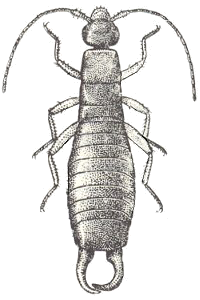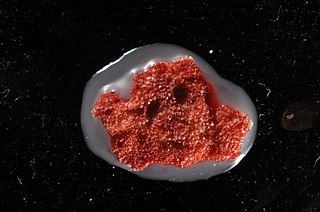
Sir Francis Hincks, was a Canadian businessman, politician, and British colonial administrator. An immigrant from Ireland, he was the Co-Premier of the Province of Canada (1851–1854), Governor of Barbados (1856–1862), Governor of British Guiana (1862–1869) and Canadian Minister of Finance (1869–1873).

Edward Winslow Hincks was a career United States Army officer who served as a brigadier general during the American Civil War.

The Cribrilinidae family is a part of the suborder Ascophora within the bryozoans. They are characterized by numerous spinose ribs (costae) overarching the frontal membrane of each zooid.

Anisolabis is a genus of mostly Asian earwigs in the subfamily Anisolabidinae. It was cited by Srivastava in Part 2 of Fauna of India. The name Anisolabis stems from the asymmetry of the male cerci; the right cercus being more acute than the left.

Coleophora ibipennella is a moth of the case-bearer family (Coleophoridae). It was first described by Philipp Christoph Zeller in 1849 and is found in Asia, Europe and North Africa. The larva feed within a pistol case on oak leaves and in the past was confused with Coleophora betulella, whose larva feed from a similar looking pistol case on birch leaves.

Schizoporella is a genus of bryozoans in the family Schizoporellidae.
Hincks Wilderness Protection Area is a protected area in the Australian state of South Australia located in the gazetted locality of Hincks about 87 kilometres north of Port Lincoln and 35 kilometres south east of Lock on the Eyre Peninsula. The wilderness protection area was proclaimed under the Wilderness Protection Act 1992 on 30 September 2004 on land excised from the Hincks Conservation Park.
Hydranthea is a genus of cnidarians belonging to the family Lovenellidae. Like other Hydrozoans they are colonial. They have hydrorhiza connected to tubular stolons attaching them to other objects, like algae, kelp, rocks and crabs.
Beania is a genus of bryozoans belonging to the family Beaniidae.
Rhabdozoum is a genus of bryozoans belonging to the monotypic family Rhabdozoidae.
Monoporella is a genus of bryozoans belonging to the monotypic family Monoporellidae.

Antropora is a genus of bryozoans belonging to the family Antroporidae.
Echinosoma is a genus of earwigs in the family Pygidicranidae, erected by Audinet-Serville in 1838.
Cheilopora is a genus of bryozoans belonging to the family Cheiloporinidae.
Eurystomella is a genus of bryozoans belonging to the family Eurystomellidae.

Rhynchozoon is a genus of bryozoans belonging to the family Phidoloporidae.
Haplodiplatys is a genus of Asian earwigs erected by Walter Douglas Hincks in 1955. It is the only member of the monotypic family Haplodiplatyidae, with many species originally placed in the genus Diplatys; a key to them was prepared by Alan Brindle.
Diplatys is a genus of Asian earwigs, in the family Diplatyidae, erected by Jean Guillaume Audinet-Serville in 1831. The recorded distribution of species is from Indochina, although this may be incomplete; it is also worth noting that other genera in subfamily Diplatyinae and the genus Haplodiplatys historically have been placed here.






